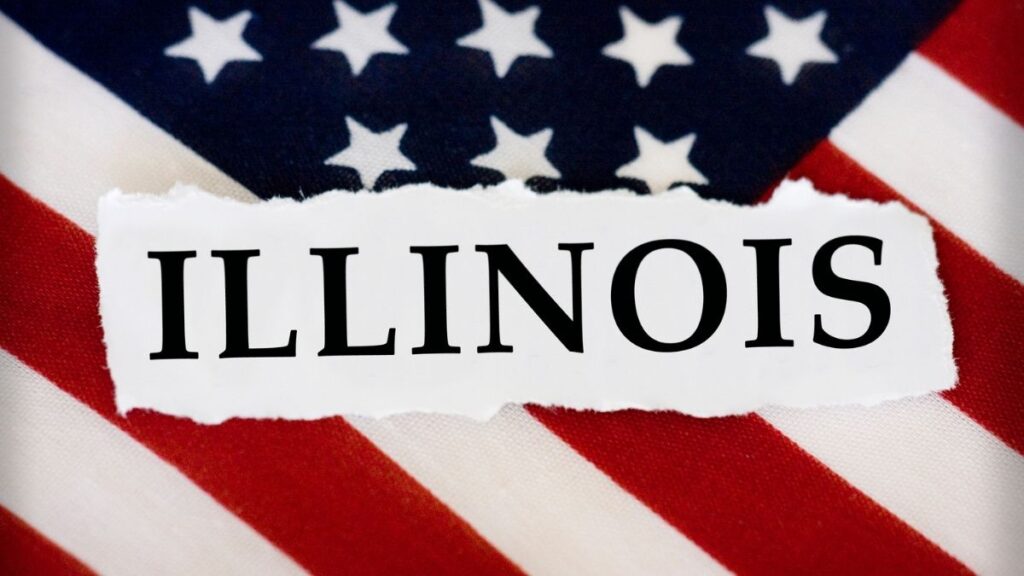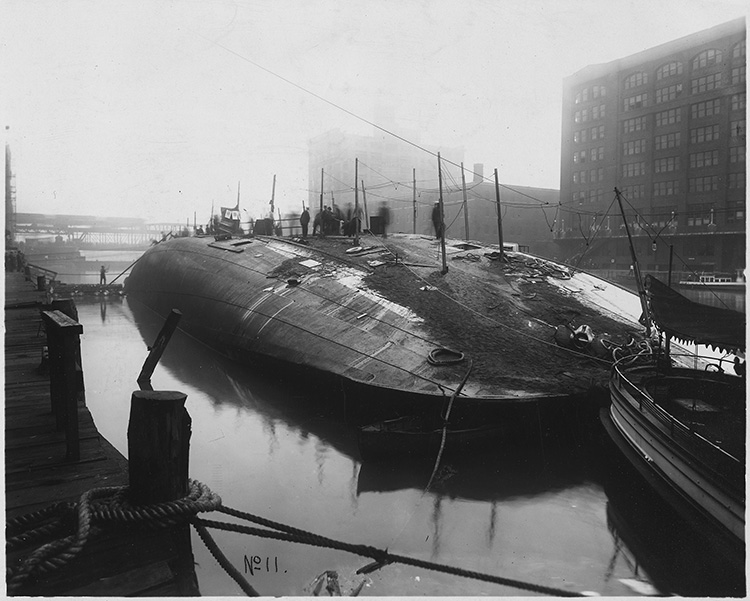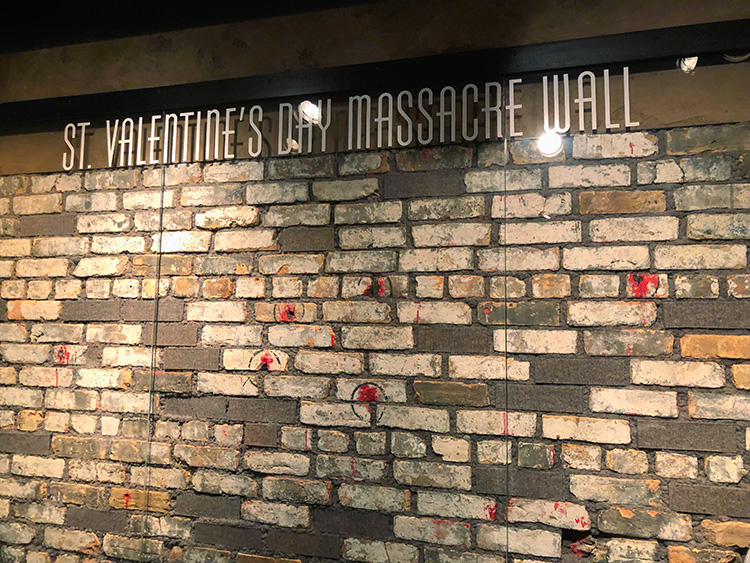
Illinois preppers face many of the same threats as anyone else in America: civil collapse, EMP, natural disasters, etc. However, Illinoisans have unique challenges than preppers in other states. What makes sense for a prepper in Alaska may not make sense for a prepper in Hawaii.
This applies to Illinois as well. This article will focus on Illinois from a prepper’s perspective. What specific challenges does the state face from a historical perspective? What are the threats given the state’s geography? Where should Illinoisans prioritize their preps?
NOTE: Do you live in Illinois? You know your state, so let us know in the comments section how this article can be improved. What did we miss? What did we get right?
Illinois Overview – Prepper’s Perspective
Most people in America today do not know that Illinois is known as “The Prairie State.” When they hear the name Illinois, they might conjure up images of a congested, sprawling Chicago where there is relentless wind and crime. However, the state has spectacular landscapes and boasts 309 state parks. Those state parks border five states, Kentucky, Indiana, Wisconsin, Missouri, and Iowa making up the Eastern North-central US region.
However, despite the reality that most of Illinois is sprawling farmland and wilderness, the image of a dirty metropolitan area is also a reality. The harbor that links Lake Michigan in the Northeast to the Mississippi River, became a trade corridor and led to the development of the metropolis of Chicago. The state of Illinois ranks 5th in the country for the highest population with most of that population being concentrated in that city and its surrounding areas.
Yet, the vast majority of Illinois is still rural. Today more than 72,000 farmers remain in Illinois. Those farmers have continued working 75% of the state’s land for generations. This leads to robust agricultural production and a thriving rural culture that is often held to the whims of those living in the northern metropolis of Chicago.
Climate
Illinois conjures up images of cold, frigid winters adorned with snow and ice. This is not a completely inaccurate view of the state. Most of Illinois has a humid continental climate. This results in cold winters and hot, humid summers. However, the state is not monolithic. The southernmost part of the state has a humid subtropical climate, with much more moderate winters.
Illinois is generally a cooler state. Though it does not have the incredibly low average temperatures you would think of a state with its reputation as having. While the average temperature in Illinois is a cooler 47.3 degrees F and the average high temperature only reaches 56.8 degrees F, the average low temperature only falls to 37.8 degrees F. This substantiates Illinois’s status as a truly temperate state.
Temperatures can go below zero throughout winter. Many homes do not have alternative heat sources beyond their primary source. Illinois preppers would be wise to install secondary heat sources in their home that can function when the grid goes down, whether that is propane, wood, or some other source.
In keeping with its temperate status, annual average precipitation in the state only has a slight variance from 48 inches in the south, to 35 inches in the northern portion of the state. Of that 48 inches, all but 10 inches is snowfall. This goes to prove that the winters in Illinois are nothing to be trifled with. This is not the place for the person that must have sunshine and warmth as the winters in Illinois are quite serious.
However, the state is wildly divided in the severity of its winter. The northern half of the state suffers much more severely from the cold and snow with a snowfall that exceeds 38 inches. However, the southern part of the state receives less than 14 inches. This gives the person committed to living in Illinois some options in terms of climate, but not an overly diverse one.
Food and Water
With the largest freshwater lake on the continent just to its north, Illinois would be a fool not to use it for its primary water source. Therefore, roughly 20% of Illinois’s population relies on water sources other than Lake Michigan. In places where this is not practical, the people of Illinois look to other sources of surface water, such as the Fox and Kankakee rivers. However, about 78% of the state relies on groundwater from the aquifers to support agriculture and drinking.
This high level of easily gained water comes with many rewards. The state is a leading producer of soybeans, corn, and swine. Additionally, Illinois produces a few specialty crops such as buckwheat and horseradish. All together the agricultural industry, in Illinois, thanks to its fertile prairies and easily acquired water, is booming, to say the least.
Politics
Illinois trends blue, but that is largely because of the greater Chicago area. Rural parts of the state trend red.. The politics of Chicago are legendarily liberal and well known throughout the United States as being very anti-gun. The senators, governor, and majority of public representatives are usually members of the Democratic party. The state’s political leaning coming from the dominance of the population of the Chicago area does not look to change anytime soon.
Population
Surprisingly, Illinois only has a population of 12.8 million. Of that, nearly 13 million roughly 9.5 million live in the Chicago Metropolitan area. When you consider that this is nearly a state within another state, it becomes very easy to understand a lot of the dynamics of Illinois. This is particularly true of its politics and economy.
For a state in the midwest, Illinois has surprising demographics. First, Illinois has more women than men, with women making up 50.9% of the population, and men making up the balance of 49.1%. With an average age of 37.4 years, the ethnic diversity of Illinois is steadily increasing. Whites 61.3%, make up the majority of the population with a large and diverse Hispanic (17.1%) and Black (14%) population making up the balance. The remaining 5.4% are Asian.
Where it becomes even more interesting is in the state’s religious and philosophical dynamics. 51.6% of the state’s population identify as part of the Christian faith. Though historically Catholic, the state of Illinois is becoming increasingly secular as they embrace post-Christian America with atheistic and agnostic beliefs. This will continue to shape the landscape for the prepper as the population slowly changes over time.
Crime
Despite the hype around the dangers of Chicago, it is not surprising to learn that the murder rate in Illinois is something to pay attention to. The murder rate is 0.09 per 1000 people, which is slightly above the national average. The rape rate is also above the national average at 0.40 per 1000 people. If you are a resident of Illinois, you have a 1 in 239 chance of being the victim of a violent crime.
Yet, when it comes to property and assault, Illinois is fairly safe. The robbery rate is 0.96 per 1000 people, and the assault rate is below the national average at 2.74 per 1000 people. Your chances of being the victim of a property crime in Illinois is 1 in 65. The burglary, theft, and motor vehicle theft rates are below the national average. While most states enjoy very low murder rates, but rising property crime, Illinois is completely the opposite.
Illinois Natural Disasters
When it comes to natural disasters, Illinois is fairly safe. The state experiences severe storms, tornadoes, winter storms, power outages, earthquakes, landslides, and wildfires. The biggest natural disaster concern for Illinois is flooding. Between 2000 and 2018, the prairie had 1,537 flooding events. However, it is very rare to have it comparable to many of the other state’s calamities.
While Illinois certainly has some water-based disasters, it seems as if you live here you need to prepare to deal with criminals. Chicago is well known to have fairly intense and horrific crimes. Most of these are motivated by things other than material gain. As mentioned above, the state has an above-average murder rate, but a below-average property crime rate. This highlights the seemingly meaningless wanton killing that tends to happen there.
Aside from criminals, there is the general concern of having so many people located in such a confined area as the Chicago Metropolitan area. With such a dense population, any disaster that happens will have a disproportionate mortality rate simply because it can easily affect many more people. This is evident when a brief study is conducted on Chicago’s most deadly events over the past century.
1) The Cherry Mine Disaster (1909) – Coal burns very well, making coal mines an inherently dangerous place to work. After the Cherry Coal Mine caught fire, 259 people died from being trapped underground by the fire and smoke. Luckily, improvements to the coal mining industry reduce or eliminate many of the fatality-generating factors of the Cherry Mine Disaster.
2) The Great Flood of 1913 – After 6” of rain fell on much of Illinois within a day’s span, the ground was fully saturated and the floodwaters began to rise. The White River rose to a height of close to 30’. The aftermath was an undetermined number of deaths and 200,000 being left homeless as the entire Mississippi watershed flooded.
3) The Capsizing of the Eastland (1915) – Due to poor design and being top-heavy, the Eastland was never a truly trustworthy ship. Regardless, it was used extensively for passenger cruises throughout the Great Lakes. In 1915, the Eastland’s design flaws finally came back to bite. Tilting 45 degrees, the ship quickly rolled over, and dumped thousands of people into the water. A total of 844 people lost their lives – a figure that dwarfs those of the Titanic or Lusitania.

4) St. Valentine’s Day Massacre (1929) – Men dressed as policemen entered a garage where known members of an Irish gang were located. In a fraudulent bust, they made them all the opposing gang members line up against a wall. Once there they shot each and every one of them. It is traditionally held that Al Capone was the mastermind behind the plot. However, to this day there is no direct evidence linking him to the murders.

5) Our Lady of the Angels School Fire (1958) – Chicago’s deadliest fire claimed the lives of 92 students after a fire that started in a cardboard trash container quickly grew to engulf the school it was next to. Every student on the second floor was trapped by a mixture of gas, heat, and smoke. By the time the fire had run its course. 95 people had died with all but three of them being children.
6) Chicago Riots (1968) – The assassination of Martin Luther King set off a period of extreme civil unrest. Widespread arson, looting, and violence took place throughout the city of Chicago. As rioters moved chaos through the city streets, they left a path of destruction in their wake. By the end, 11 people lost their lives and 125 fires had burned.
Illinois Challenges
By far, the most deadly things a prepper must worry about in Illinois are the people and flooding. With so many people being concentrated in the Chicago area, any level of disruption to daily life there will undoubtedly cascade through the region.
That means that a prepper must ready their home, their family, and themselves for civil unrest. While floods could be incredibly damaging, they are easily predicted and mitigated. Rioters empowered by a lack of accountability and infrastructure to enforce the rule of law are anything but predictable. Therefore, the prepper in Illinois must be vigilant of things happening in their state and be prepared to react accordingly.
Illinois Prepping Strategies
Illinois has fairly standard challenges for the prepper. For the most part, standard prepping strategies and prepper supplies will serve Illinoisans well.
Bugging In
Buy the Right Property
Nothing can fix a property that is purchased in a flood zone. With the amount of water that flows through Illinois and the history it has with flooding on the eastern side, it is imperative to purchase a home that is well outside a flood zone. Ideally, finding a home or building one that is situated atop a hill or ridge will insure you from being swept away in the next great flood.
Don’t Advertise
The best way to stay safe while bugging in during rioting or looting is to simply become a ghost. Don’t draw attention to your home in any way. Don’t hang flags, signs, or anything that could be perceived as taking a political side. Additionally, don’t adorn your vehicle or home with the trappings of wealth. Riots follow legitimate protests and looters follow rioters. If you don’t make your home a target, it is very likely that the crowd will simply pass you by.
Arm Yourself
If you are staying in during civil unrest, make sure that you can defend your home. This does not mean just having a firearm, but being proficient in its use. Regular training that compliments a robust commitment to being physically fit is vital during times like these.
Don’t forget to also invest in the tools and training that will be needed to put out any fires that may be started by the mob. Emergency services are likely to be completely tapped during this event and you will need to be able to self-rescue from a variety of situations. Now is the time to be getting ready.
Bugging Out
One of the most important pieces of equipment for any prepper planning to bug out is to have decent maps of their state. Having an identified bug out location is crucial. All preppers in any state should begin their bug out plans with a paper map of their state. Nothing is better for all-purpose use than the DeLorme Atlas and Gazetteer.
- Includes back roads, elevation contours, recreational areas, etc.
- Paperback for easy carry and storage
- Easy to use and read
- English (Publication Language)
Buy a Boat
This may not be for everyone, but as noted, Illinois is prone to flooding and unrest. If you are bugging out there in either case, having a simple flat-bottom boat will allow you free passage to where you want to go. During a flood, the boat will allow you to get on top of the flood waters and make it to safety. During periods of civil unrest, you are much more likely to avoid marauding crowds by navigating local waterways than by going over land. Keep your boat simple with a large fuel capacity and limited gear. This will help you maximize space during your hour of need.
Go Where It’s Hard
In the event that criminal activity drives you from your home, go to where it is difficult to live a comfortable life. Those participating in such activities shy away from difficulty and will likely avoid the areas that require work and determination to live. Therefore, seek out swamps, hills, mountains, or any undeveloped area, you will have put natural insulation between you and the rioters. The many state parks in Illinois could make good bug out locations.
Stay Mindful of Cars and Buildings
There is a military saying, “cars and buildings attract bombs.” This is also true for rioters, looters, and criminals. By steering clear of cars and buildings, you will avoid the majority of people and therefore those with hostile intent. Whether it is by foot, bike, motorcycle, or boat, staying off the main roads and away from points of interest is the best way to ensure your safety until order is restored.
Additional Reading for Illinois Preppers
This article just scratches the surface of what Illinois preppers need to know. The following links could held educate you more on prepping in the state.
Prepper Groups-Ilinois – Active forum of preppers in the Illinois area with good information and networking potential.
Prepper Support – Facebook group of preppers in Illinois that posts on a semi-regular basis.
MidWest Wood Craft– Bushcraft and survival school that teaches participants how to live off the land.
The Wild Nature Project – Back to the earth style school that teaches living off the land via wild plants and herbs.
C.U.M.A Survival School – Urban and wilderness survival classes on how to survive no matter the environment.
Illinois Department of Public Health – Illinois emergency preparedness and response plan and preparation advice.
Chicago Office of Emergency Management – Official emergency management and disaster response news.


2 comments
I live in Illinois, in this last election if you were to look at the map. Most of the state is red except for Chicago and directly around it. Also what was not mentioned was the temperatures dip into the negatives quite a bit. Most houses do not have a heating source other than central heat and air. If the power was to go out people will freeze to death. I have back up plans until we get a wood stove.
Thanks for this. I’m editing the article accordingly. These state-by-state articles are intended to be “starter” articles, becoming more thorough over time. Your input helps.